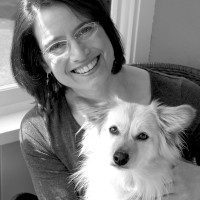Fourteen years ago, as a Master’s student in poetry at Western Washington University, I signed up for a pleasingly mysterious course called “The Lyric Essay.” The professor, Brenda Miller, introduced us to a thrilling range of innovative writers and experimental projects, from Anne Carson’s Plainwater to John D’Agata’s Halls of Fame to Bernard Cooper’s Maps to Anywhere.
Later, with other student-editors from the Bellingham Review, I sat in Brenda’s living room for a literary submissions reading party. There she passed around her own first collection of lyric essays, Season of the Body. It was the first book of literary nonfiction Sarabande Books had published, and I beamed with pride that my teacher was the author of the press’s first foray into lyric essay terrain. When it came to me, I held this book in my hands like a newborn, beautiful and delicate and full of possibility.
Once I began reading Brenda Miller’s essays, it was official: there could be no turning back for me. I was determined to follow, as diligently as I could, in the soft, wise, lyric footsteps that stretched before me.
***
The Rumpus: For the students in my undergraduate and graduate creative nonfiction courses, the name Brenda Miller is essentially synonymous with the lyric essay. I don’t think they—or more properly we—are alone in linking you with this genre either. So it seems fitting to begin this conversation by asking you how you came to the lyric essay as a writer and if you always knew it by that name. Perhaps what I’m really asking is whether you always knew you were writing lyric essays as far back as your first literary endeavors, or whether you were thinking of what you were writing as something else, or if you were in fact writing something else all together when you first began—poems? stories?
Brenda Miller: If we travel back to when I first began writing, it would be scribbles on a piece of lined paper documenting everything that happened in my days as a seven-year-old girl from my brother hitting a home run in his little league game to what I was hoping to have for lunch (grilled cheese). So I guess at an early age I felt the urge to document, to transcribe, to bear witness. I became a high-school poet, then majored in journalism in college, which taught me the value of writing quickly and clearly, but eventually felt too constrained. Years later, I took a class in the personal essay, just for fun, and gradually “heard” the cadence and tenor of my authentic voice.
Though those early pieces were not in forms that one would immediately label “lyric,” they found their footing in contemplative observation, surprising (and satisfying) connections, and attention to image and metaphor. My poet self always bleeds through. When I went on to graduate school, I began to study segmented forms, and my writing mind naturally gravitated toward the kind of writing that grapples with a subject intuitively, staying in the “not-knowing” stance as long as possible.
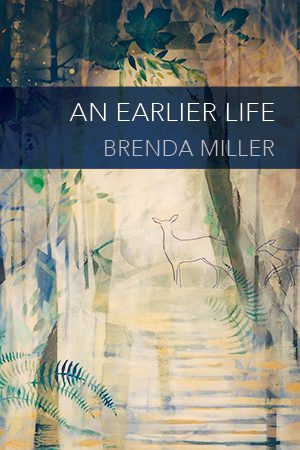 Rumpus: I really love the idea of a “poet self” that bleeds through in your prose writing. Can you say a little more about what you mean by this—how you feel or recognize this poet self at work? I also want to acknowledge that many young writers feel pressured to choose between poetry and lyric essay or, because of the reality of thesis requirements, they are required to choose a single genre of focus for their first book projects. Do you feel that you chose lyric essay as your principle genre over or instead of poetry, or in some sense did lyric essay choose you?
Rumpus: I really love the idea of a “poet self” that bleeds through in your prose writing. Can you say a little more about what you mean by this—how you feel or recognize this poet self at work? I also want to acknowledge that many young writers feel pressured to choose between poetry and lyric essay or, because of the reality of thesis requirements, they are required to choose a single genre of focus for their first book projects. Do you feel that you chose lyric essay as your principle genre over or instead of poetry, or in some sense did lyric essay choose you?
Miller: Oh, it definitely chose me! In fact, I think it’s one of those paradoxes: if you intend, or set out, to write “lyrically,” you’re probably going to be too self-conscious to do it well (which is a problem for those of us who teach the lyric essay! “Be lyrical, go!”) So much of my writing process is simply getting out of my own way; I have to “go out of my mind,” literally. I mentioned intuition earlier, and to me this is the accurate representation of what I mean by the poet self: the poet self is the one who remains quietly alert in the background, noting a thousand small details, closing her eyes and breathing until they begin making their own connections. She lets the mind do her worrying, her to-do lists, her efforts, knowing that the power of intuition will always win out. As for your question about writers needing to plant their flag in one genre or another: I really believe some of those boundaries are starting to slip. Editors and readers seem eager to encounter works that are doing something differently. In my most exciting (for me) work right now, I’m writing collaboratively, which bypasses the mind entirely and creates pieces that have no allegiance to established genre norms.
Rumpus: As someone who has had the pleasure of collaborating with you over the last six months, I’ve been meaning to thank you for inviting me to write with you in the first place and also to ask how you found your way to the collaborative literary process. It has always made sense to me that musicians collaborate. What could be more natural than the collaboration between band members? But until I began writing with my friend Denise at her suggestion, and now writing with you as well, I had always thought of writing as a solitary activity, a process by which I separated myself from the world in order to reflect upon it. How did you discover the more communal, dialectical experience of writing with someone else, and how do you think it has changed (if it has changed) your single-author work?
Miller: In a way, my writing has been collaborative for several years now, in that I do much of my writing either in a generative writing group or as part of a contract I’ve made with another writer. I used to subscribe to the writer-as-solitary-artist creed for decades, but then found I was getting into a rut and feeling lonely to boot. Writing in the presence of others—whether that be face-to-face or long distance—enabled me to feel accountable and more focused.
And I suppose you could say that the very first essay I ever wrote and published—“Prologue to a Sad Spring”—was written in indirect collaboration with the photographer Edward Weston. Given the task by a teacher to “write a personal essay” (which I’d never really done before), I turned to a postcard that was scotch-taped above my desk, a photograph of the same name by Weston. I examined the image and asked myself why it appealed to me. That question, “Why?,” led me to an exploration of loss and loneliness. Without Weston’s work in front of me, the essay would not have been written.
The first direct collaboration I did was with Suzanne Paola on our textbook, Tell It Slant. We each brought different strengths to the task, and we had a lot of fun with it. I also co-wrote The Pen and the Bell with poet Holly J. Hughes, which we began as a series of letters to one another. Both of these processes spurred writing that I wouldn’t have done otherwise.
Now I’m doing creative collaborations with you, and with my colleague Lee Gulyas. I’m having so much fun with both! And I’m afraid it’s addictive; I find it rather difficult to write “my own” work now. I need that interplay of voices, the intuitive associations, the surprises that greet me each day.
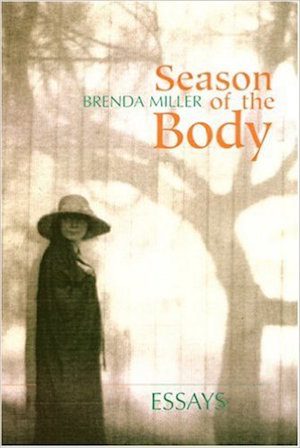 Rumpus: I love the idea of indirect and direct forms of collaboration, and of course I’m so glad you mentioned “Prologue to a Sad Spring,” Brenda, an essay that appears in your first collection, Season of the Body! This is an essay I frequently bring into my own creative writing classrooms as an example of how writing can begin ekphrastically and then go on to unfold a series of connections between a particular work of art and the writer’s own life. I suspect, though, that many works of art—literary, of course, but also visual, aural, performative, culinary, etc.—inform the work that writers do, even when the works of art themselves are not identified or discussed explicitly in the text. Perhaps I’m speaking of artistic “triggering towns,” to borrow Richard Hugo’s phrase.
Rumpus: I love the idea of indirect and direct forms of collaboration, and of course I’m so glad you mentioned “Prologue to a Sad Spring,” Brenda, an essay that appears in your first collection, Season of the Body! This is an essay I frequently bring into my own creative writing classrooms as an example of how writing can begin ekphrastically and then go on to unfold a series of connections between a particular work of art and the writer’s own life. I suspect, though, that many works of art—literary, of course, but also visual, aural, performative, culinary, etc.—inform the work that writers do, even when the works of art themselves are not identified or discussed explicitly in the text. Perhaps I’m speaking of artistic “triggering towns,” to borrow Richard Hugo’s phrase.
So, I’d like to know what other works of art have inspired and continue to inspire your lyric enterprises, even when they are not directly engaged or even named in the work itself. And in addition to these subtle and indirect forms of collaboration with other works of art, I’d also be very interested to hear about your experience collaborating with publishers on titles, cover art, and book layout. Edward Weston’s photograph, “Prologue to a Sad Spring,” became the cover image for Season of the Body, which contains the essay of the same name. I have no doubt astute readers take great pleasure in this discovery as they read the book, and at least for me, the realization that the photograph you were describing in that essay was familiar to me—oh, wait, it’s there, on the cover!—deepened my experience of the book itself as an art object and a true lyric gestalt rather than simply an assortment of individual essays.
Miller: Thank you, Julie. I too, love the fact that the Edward Weston photo made it onto the cover of Season. The image says so much to me in that context: the way the young woman is looking toward what could be the past and future at once. She has become an emblem of my writing mind. And I’m lucky that on every one of my essay collections, I was able to choose the cover image, and each image gives a thematic or tonal “hue” to the book it graces. For example, I just completed an intensive process with my book designer on my latest collection, An Earlier Life. I was able to acquire the rights to the painting “Ghost Deer” by Janet Fagan (the cover artist who also provided the image for Blessing of the Animals, a wonderful echo for which I’m thrilled), and the reverberant light of the forest, the faint outlines of deer looking toward the unknown: this all provides a subtle way of holding together the essays within the book.
There are many essays of mine that refer directly to artwork. For example, “Dog at the Edge of the World,” included in Listening Against the Stone, begins with my search for an imagined (or misremembered) Franz Marc painting, then goes through the process of finding the actual painting. The essay becomes about that gap between memory and reality. I incorporated other Marc paintings into the mix, and research about Marc himself, which led me to an examination of depression. It’s become one of my favorite essays because I started out with no idea what the essay would be about; I only followed the trail the painting provided.
In An Earlier Life, I include an essay called “Regeneration” (that also, coincidentally or not, deals with depression), which began as an exercise with my students when I took them to the art gallery on campus. We interacted with the installation “The Sound of Cells Dividing” by Geraldine Ondrizek. Ondrizek created paper “cells” we could sit inside and listen to recordings of human cells (yes, that’s a thing!). In these kinds of indirect collaborations (where the artists don’t know you’re collaborating with them), you’re allowing another artistic sensibility to complete and inform your own. It feels a bit like being occupied by another energy source.
As for other indirect collaborations or inspirations: I often begin a writing session by reading poetry aloud, so the poets are invited into my process. They serve as a kind of tuning fork. I once wrote an entire book while listening to Beethoven’s violin concerto, so his aching melodies, the sense of a player straining to achieve transcendence, informed the prose. I’m always listening to the radio, and very often snippets of stories will be the trigger for work that may come much later. The key, I’ve found, is to be alert to everything; you never know what might turn out to be useful.
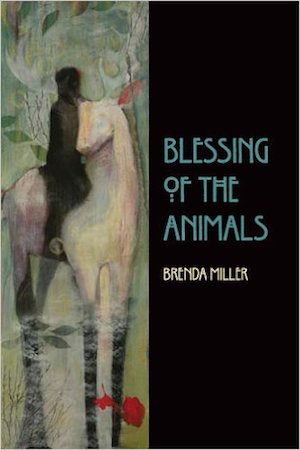 Rumpus: The poet Mary Oliver writes, “To pay attention: this is our endless and proper work.” This is a statement I frequently excerpt for my creative writing syllabi, and it echoes the call to alertness you are advocating here! The writer is on high alert to collaborate with every possible aspect of the world around her, I hear you saying, and I couldn’t agree more. One of the ways you do this is through “hermit crab essays,” an image that you and Suzanne Paola coined to describe the practice of adopting non-literary forms, like a menu or a tarot card reading or an instruction manual, as vehicles for presenting literary material.
Rumpus: The poet Mary Oliver writes, “To pay attention: this is our endless and proper work.” This is a statement I frequently excerpt for my creative writing syllabi, and it echoes the call to alertness you are advocating here! The writer is on high alert to collaborate with every possible aspect of the world around her, I hear you saying, and I couldn’t agree more. One of the ways you do this is through “hermit crab essays,” an image that you and Suzanne Paola coined to describe the practice of adopting non-literary forms, like a menu or a tarot card reading or an instruction manual, as vehicles for presenting literary material.
One of my favorite essays in which you adopt a non-literary form to create a literary experience for your reader appears in your second collection, Blessing of the Animals. The essay is called “Table of Figures,” a phrase most of us associate with science class. You appropriate the form to consider yourself as a younger woman in what I would describe as a kind of contemporary ekstasis—standing outside the self, looking in. And in fact, you regard and inspect your former self with the care and precision of a scientist examining a table of figures in the essay. This is only one of many “hermit crab” essays of yours I have read and admired, and I wonder if you could talk a bit about coming to conceptualize the adopted-form essay in this way and about your practice of trying on various “shells” in order to render personal experience. How do you resist gimmicks? How do you know when you’ve found the best shell to hold the particular contents of an essay?
Miller: The hermit crab is one of my favorite kind of essays to write, and I can’t tell you how thrilled I am that the moniker “hermit crab” has become the accepted term for adopted-form essays! I wrote a piece for Brevity in which I try to describe how the use of obvious forms becomes a “shared space” between reader and writer. In this article, I’m talking about a piece I wrote in the form of rejection notes (“We Regret to Inform You,” which originally appeared in The Sun and now serves as the epilogue to new latest collection, An Earlier Life.) I wrote “We Regret to Inform You” the way I write many hermit crab pieces: I chose the form first and then let the form dictate the content. In this way, I can set my intellectual mind the task of re-creating the form/voice on the page, so my subconscious mind is free to come out and play.
In this case, the form of rejection notes naturally led to the theme of rejection of all sorts. The tension between the brusque, informal voice of the rejection note and the intimate revelations that arise within these notes, creates both humor and connection with the reader. The writer needs to let herself go wherever the voice takes her, and so she, too, is surprised and delighted by what emerges. I think that’s what keeps a hermit crab from being too gimmicky or shallow: when the form fits the content, but in surprising ways. There has to be some heart at the core of it, some kind of risk.
This is why the hermit crab can be harder to write than it looks. Believe me, I have many “failed” hermit crabs in my files, but in some of them, I was able to access material I never would have found in any other way. So I take it out of the hermit crab form and use it for other purposes.
Rumpus: Because I now teach a lyric essay graduate seminar myself, I am always on the lookout for succinct yet luminous ways to describe our enterprise. What you say here—“There has to be some heart at the core of it, some kind of risk”—feels like one of the truest credos I could use to speak, not only about hermit crab essays, but all forms of what I might broadly call “lyric and experimental nonfiction.” To date, what do you consider to be the greatest risk you have taken as a writer? Perhaps as a corollary to this question—though the answer might be the same—I’m wondering what the greatest surprise of your writing life has been thus far?
Miller: Julie, you’re right, in that risk and surprise seem synonymous, or perhaps synchronous, to me. If we think of it this way, risk becomes something that is not so intimidating. I’d say that anytime we set the intention to write—and to prioritize this rather nebulous process in our days–we are taking a risk, and every time we’ve written something “good,” it comes as a surprise. We need to remain, as long as possible, in an innocent and playful state of mind. I think, in my best moments as a writer, I’m still just scribbling, not sure where I’m going. I’m still just that little girl sitting in the stands, pressing my pencil to a sheet of paper that’s in danger of being blown away.
To be more specific about your question, though: I think I’m surprised that I did end up writing more directly about my experience with clinical depression. It’s not an easy topic to write about directly, and if I remained in my intellectual mind, I never would have approached it. But I allowed myself to “scribble,” and in several essays in An Earlier Life, the forms provided me containers to hold this risky topic. In “36 Holes,” for example, I was writing in the midst of a rather scary mental episode, while at the same time I was watching the live feed of the rescue of 33 Chilean miners from a mine collapse. Watching them literally return from the depths of the earth created a way for me to contextualize my own descent and return. But the important thing is: I had no idea that’s what I was doing at the time. I was simply writing what was directly in front of me. And I had a challenge from a writing friend, Sherry Simpson: to write an essay about “holes.” So this combination of things—the intimate community of friendship, the wider community of the world, and my own deep introspection—allowed this essay to emerge. It remains one of my favorite pieces and still has an aura of mystery about it.
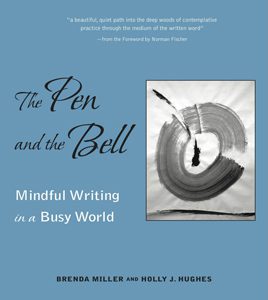 Rumpus: I do remember that you always presented yourself to us, the students in your graduate lyric essay seminar, as someone who was a fellow learner. Clearly, you were a more experienced learner than the rest of us in that room, but there was always a sense of openness to possibility about you, of still-learning-ness about you, that enabled me to take risks in my own writing—and to believe in a future for my writing beyond that class. Many years deep in the teaching and writing life now, I wonder how you keep that capaciousness alive in yourself and how teaching creative writing to others informs your own writing practice. Tell It Slant is a phenomenal guidebook for teaching creative nonfiction, so perhaps deciding to write a volume (with Suzanne Paola) about the process of teaching writing helped you hone your insights about teaching by paying extra close attention to your pedagogical strategies? But teaching itself—what has it taught you about Brenda Miller, as a person and a writer?
Rumpus: I do remember that you always presented yourself to us, the students in your graduate lyric essay seminar, as someone who was a fellow learner. Clearly, you were a more experienced learner than the rest of us in that room, but there was always a sense of openness to possibility about you, of still-learning-ness about you, that enabled me to take risks in my own writing—and to believe in a future for my writing beyond that class. Many years deep in the teaching and writing life now, I wonder how you keep that capaciousness alive in yourself and how teaching creative writing to others informs your own writing practice. Tell It Slant is a phenomenal guidebook for teaching creative nonfiction, so perhaps deciding to write a volume (with Suzanne Paola) about the process of teaching writing helped you hone your insights about teaching by paying extra close attention to your pedagogical strategies? But teaching itself—what has it taught you about Brenda Miller, as a person and a writer?
Miller: Thank you so much, Julie. Even after nearly two decades of teaching, it’s always wonderful to hear a student’s perspective on what is happening in the classroom. From my perspective, I’m just paddling as fast as I can! And I think I would have quit teaching long ago if I hadn’t found a way to remain as invested in the writing practice as I hope my students will be. I enjoy working with students who have natural talent and already, somehow, are able to write amazing things in the midst of their busy lives, but I get a particular thrill from working with students who struggle to see what unique voices they have to offer in the mix. When they stand up from a conference with me and say, “I’m so excited now!” I know I’ve done my work. Not everyone will end up dedicating their lives to writing, but I hope all students will learn a bit about the authentic selves that come out in their writing.
I was just speaking to a group of students the other day in Portland, Oregon, and I found myself saying this: “I don’t have time anymore for things that don’t give me joy.” I was speaking about my writing—about how I’ve learned to follow wherever the energy of the writing takes me, rather than getting stuck in the “should”—but it also applies to your question about teaching. I’ve developed practices as a teacher that are more fully aligned with what gives me joy. For example, that means giving feedback in one-on-one conversations rather than in written comments. I become fully engaged in the connection with the student, and I hope they feel that way, too. I’ve been taking a course on the science of happiness, and one of the key factors is deep connections with others. While I can’t hope that every student will feel the benefits of this connection, I feel honored to be able to practice this art of connection with them.
Rumpus: The end of the interview always comes too soon, and there are so many questions I still have yet to ask! Perhaps I’ll conclude with these: As your book An Earlier Life is published this spring, I’m curious to know what new insights about that earlier life you have gained through the process of rendering and examining it on the page? And invariably, I’m curious to know what other projects you have underway, perhaps spurred on by the discoveries you made while writing An Earlier Life. What can you share with us about the essays and books you see in your literary future?
Miller: It’s been such a pleasure conversing with you, Julie. We’ve been holding this interview in the days leading up to my ten-day writing retreat (at the Whiteley Center on San Juan Island), so it’s been wonderful to have this opportunity to reflect on, and remember, what’s important to me about the writing process. I always feel nervous before a writing retreat, as if I’ve forgotten how to write and have nothing to say! I suppose this is a good place to be: in “beginner’s mind.”
I put together the collection An Earlier Life on just such a retreat. Putting together a collection is just as creative an act as writing the individual essays; I’m trying to enter an intuitive frame of mind to see the connections between pieces and the best order to highlight the themes I see arising. I’m rarely aware of those themes as I’m writing (if I was, I’d be pushing too hard), so it’s always kind of astonishing to see how the writing mind knows your perennial questions and addresses those questions in all kinds of ways.
In this case, I saw the theme of forgiveness. (I’m getting a little teary even writing that word just now). I’ve written about the past so much, I thought I’d have nothing new to say, but in these essays I observe the young woman I was with an eye of compassion. I understand her a little more, and the narrative voice is able to bestow a kind of absolution I didn’t even know I needed or wanted.
As I go forward, I’ve been gathering material for a long essay about embarking on voice lessons as an adult (which has been hilarious, humbling, and enlightening). I’m eager to continue both my collaborations and see how far we can go. And, of course, whatever will reveal itself in my scribblings, as long as I can read my own handwriting!
